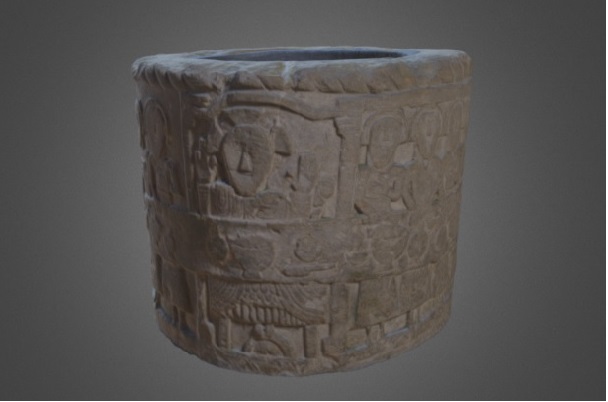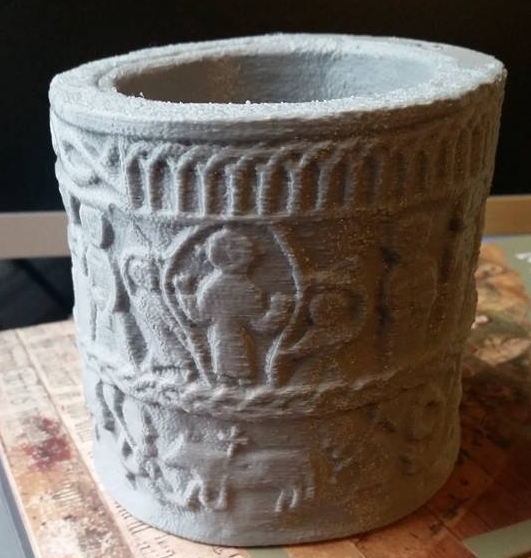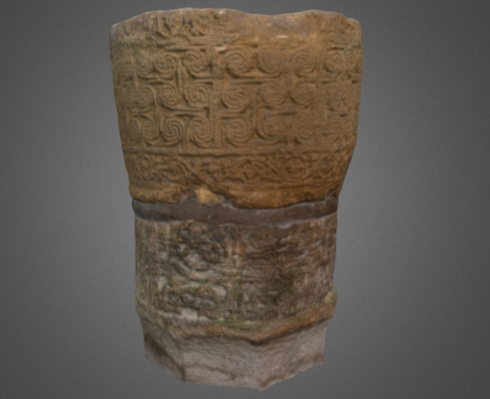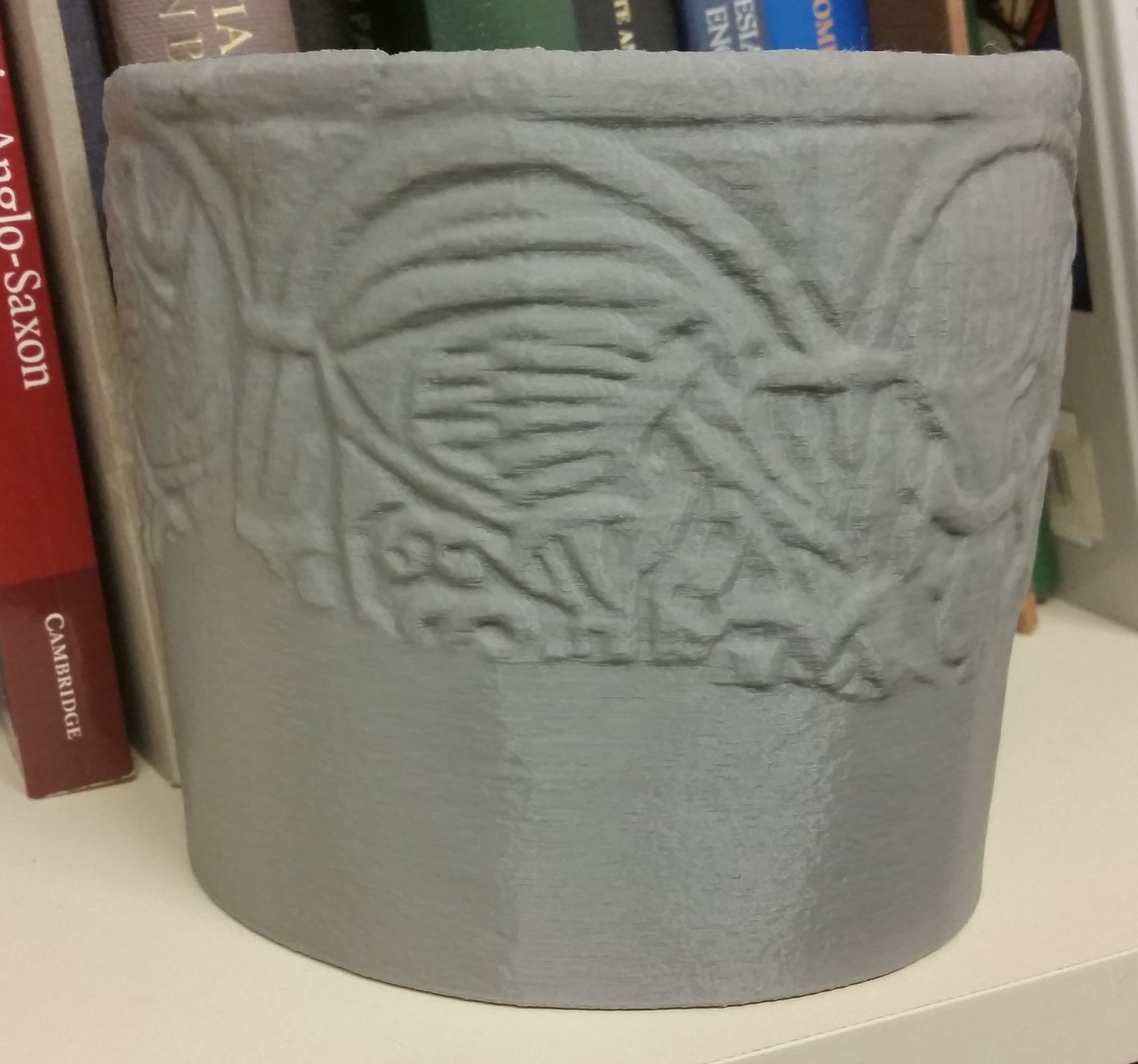Processing a 3D model in plastic resin of the early medieval baptismal font from Wilne (Derbyshire) on a MakerBot 3D printer in the Boston College Digital Studio
Research & Teaching with Digital Tools
I create 3D models of early medieval baptismal fonts from the alignment of dozens of photographs, a process called photogrammetry. Much surviving baptismal font evidence reflects a long postmedieval history of Reformation iconoclasm, Victorian restoration, and/or modern repurposing as cattle troughs and garden ornaments. I use photogrammetric modeling to visualize and analyze these objects as medieval men and women would have originally encountered them. Using computer software, I can reconstruct font iconography from damaged or fragmented examples and digitally restore their often poorly-lit and ex situ placements in the parish church.
My interest in using digital tools for research alligns with my priorities with students in the classroom. I incorporate a variety of visual images, film clips, and other media in my classes, including 3D models of pilgrims' souvenirs in one particular assignment. Providing students with 3D-printed replicas of the objects discussed in class not only introduces them to the things, ideas, and actors of history in a tangible way, but also allows students with visual disabilities and different learning styles to participate fully in the assignments. Integrating digital tools into traditional teaching methods expands the ways students engage the discipline of history.
Click HERE to view & download these models on Sketchfab




